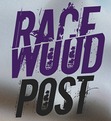The Flexible Outline
Over the course of writing and rewriting my current work-in-progress, I’ve come to try something new for myself in the hopes of making life a little bit easier in the future. Early on in my editing I decided to change some things in the first half of my novel which at the time seemed simple enough. They didn’t feel all that life changing for the story until you realize that the entire latter half of the novel is forever changed because of events in the beginning which has forced me to retool the second half of the novel as well. Effectively rewriting 60k words. This proved to be trickier than I thought, and I realized midway through all of this that had I bothered to give myself an outline I might have avoided all of this. But not just a traditional outline. See, outlining the traditional way has never really worked for me. Sure it could work for about three or four chapters, but then something would happen at the end of the third chapter that would make it impossible for me to begin chapter four where I had initially planned too because the character therein was usually dead. Or maimed. Which led me to consider a new option, what I like to think of as a flexible outline.
Keep in mind, I’ve only done this with a draft completed and at least half the novel already written, so I’m not sure how this is going to work when I try it for book 2 with nothing written, but the process is thus.
Step 0: (If you’re starting your novel from scratch) Write a summary of the entire novel: This should be a little more lengthy than what would be on the back of the book. You really want to have a good idea of major plot points if you can. It’s important you have a good idea of the story you want to write.
Step 1: Write a chapter summary: This summary should be roughly a paragraph in length and give you a good idea of where the chapter is going. Important plot details, everything that should happen in this chapter, should be written here.
Step 2: Expand into a scene by scene outline: After you’ve come up with a plan of action, now you have to expand that a bit into a scene by scene outline. Each scene should have their own paragraph (or a little more if necessary) of important information including important dialogue (if that comes up).
Step 3: Write the chapter: This is very important. In normal outlining you’d outline the entire book then start writing, but in order for your outline to be flexible you need to write the chapter after you’ve finished outlining before going on to outline the next chapter.
Step 4: Repeat steps one and two keeping in mind everything that’s happened in the previous chapters.
After you’ve completed these steps comes the editing phase. This is where you really solidify the plot and storyline. There are a few ways in which you can do this, and millions of blog articles written on the subject. How many drafts you write, how much editing is needed depends entirely on you. I recommend doing something that I’ve actually never done, but that has been highly recommended by other writers… give your story an actual read through. No red pen, no blue pen, no pens of any kind. Just read it through, beginning to end. It might be painful, but more importantly it’ll give you an idea of what’s working, and what isn’t working. Make a mental note of things that are particularly good or particularly bad (or if you need too, write it down). Then when you sit down to do your edits you’ll know what needs to be fixed. Does the story need a great deal of rewriting to realign with the initial vision you had in your head? Now would be a good time for a dual outline of what actually happens, chapter by chapter. Versus what you want or need to happen chapter by chapter. With each draft it’s important to really give your book a read through, so that by the fourth draft (which is almost universally accepted as the number of drafts it takes to complete a novel) you’ll know it backwards and forwards and likely be sick of it. After the fourth draft, hand it over to beta readers, or an editor if you have one. Chances are there are things that will still need to be tweaked, and that’s okay. If you’re getting the same notes from different people you know this is going to be a larger problem that needs to be fixed, if you get conflicting notes, go with your gut.
Then and only then would you either a) attempt to find a publisher/agent or b) find a professional editor to help you with the finishing touches for self-publication. I strongly recommend that in both cases you have a clear plan of action for what comes after publication. All book tours, blog tours, reading events, book signings, marketing in general should be planned out as best as possible. Because going into this blindly is a nightmare, trust me, I’ve lived it.






